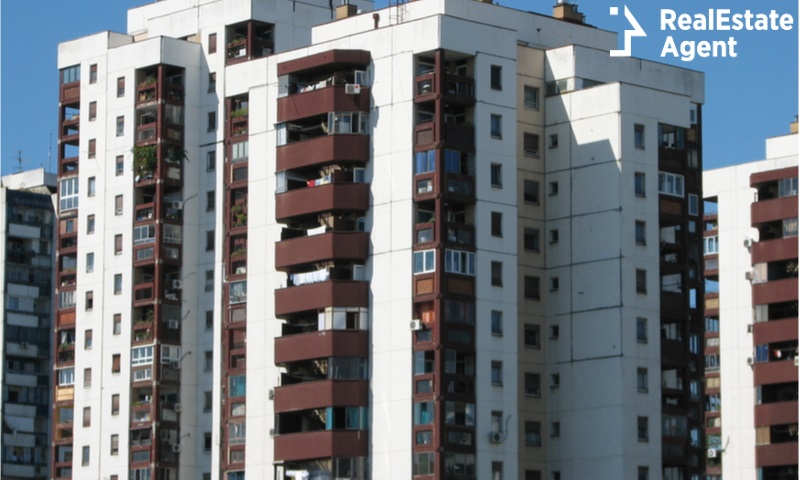Access to adequate housing has been acknowledged as a human rights issue in 1948 when the Universal Declaration of Human Rights had been adopted. Every person, regardless of wealth, social status or culture has a right to housing and shelter. The issue has been raised time and time again as poverty numbers have been rising and homelessness in an ever going struggle in many parts of the country. There is a shortage of low-income housing but there are steps being taken in that direction to improve the situation.
There are programs that are trying to provide and simplify access to low-income housing available. But getting access to housing, especially for low income families, can be difficult and problematic more often than not. As the housing costs rose while the median household income did not manage to keep up, it led to an increase in the number of people and families who need access to low-income housing. Through those programs the federal government went into collaboration with private sector’s development companies in order to provide the much needed low-income housing.
How do those programs work?

The most important program available in the country today for the accessibility of housing for low-income families is the Low-Income Housing Tax Credit (LIHTC). Starting in 1986 the LIHTC is a way for the federal government to motivate private developers to construct low-income housing.
The private developer requests tax credits (about 70% tax cuts for 10 years) for the construction from the states housing finance agency. These tax credits are sold to investors and the money received is used to build housing developments. The investor is the majority owner and beneficiary of the tax cuts. The developer needs to provide a certain number of low-income housing for at least 30 years and meet any requirements from the housing finance agency (i.e.: veterans units, homeless units, etc).
Other programs waive taxes for developers or provide a system of income based assistance through which they help low-income individuals with their monthly rent costs in certain situations, like the Section 8 Housing Choice.
Apply for low-income housing

As mentioned above, we are living in a time when the housing costs have risen while the median household income did not manage to keep up. This created a widening gap between the available income of an individual and the monthly rent requirements. It is generally accepted that the housing costs for an average family should not exceed 30% of that family’s income. This balance, however, is almost impossible for many families living throughout the states.
Those programs had been created especially for low-income families and individuals who spend more than they can afford on housing. The Department of Housing and Urban Development(HUD) is able to verify who is eligible for low-income housing.
In order to apply for low-income housing you have to contact your local Public Housing Agency as they have information about the availability of low-income housing and waiting lists. At the same time, if you are interested in a particular area or housing development you can inquire directly at their management office. You will find out that some Public Housing Agencies can have longer waiting lists so if you apply for low-income housing you shouldn’t limit your applications to one building, one local agency or one development. Applying in more places increases your chances of finding low-income housing.
What are preferences in low-income housing?
Some housing developments have something that is called preferences. As mentioned above, the housing finance agency might ask for certain requirements from the developers. These requirements are related to types of prospecting low-income housing tenants. They base these requirements on those people that would get the best benefits from reaching the point when they apply for low-income housing.
The housing finance agency can ask developers to provide a certain number of their low-income housing for veterans, seniors, people with disabilities or homeless people. These preferences require developers to prioritize applications for low-income housing for these preferential demographics as those demographics are considered more in need of housing.
This does not mean that people outside of these demographics are unlikely to get low-income housing, just that there are less prioritized.
Are you eligible for low-income housing?

There are certain factors that are taken into consideration about each individual who decides to apply for low-income housing. These factors are analyzed by the HUD and they are also the ones that decide who can benefit from low-income housing. In order to make this determination as transparent as possible, they firstly look at the median wages of each area where they operate and create a three level system for low-income housing eligibility. They base this system on the size of the household that got to apply for low-income housing, and the gap between that household’s income and the area’s median household income (AMI).
- Extremely low-income households – an income that’s lower than 30% of the AMI
- Very low-income households – an income between 30% and 50% of the AMI
- Low-income households – an income between 50% and 80% of the AMI
Public housing agencies are compelled by law to provide 75% of their housing assistance vouchers to those households that are in the extremely low-income level.
Top 5 best states for low-income housing

While programs like the low-income housing tax credit are promoted from a federal position, the development of low-income housing varies from state to state. As some states offer more benefits for the housing developers than others, this creates a discrepancy in the availability of low-income housing. That is why in some states low-income housing is more available than in others.
In the following list we took the affordability of housing for low-income families as well as the general cost of living. As there are cases where individuals manage to make do for a median monthly rent from a lower income, there are also situations when while they can pay rent, they give up on other necessities, like running water. This is why we also put emphasis on cost of living because, while a roof over your head is a human rights issue, access to water, food and other expenses improves the quality of life for anyone.
- Iowa
Out of around 3 million people living in Iowa, there are over 71,300 people living in 43,000 households in Iowa that benefit from federal rental assistance out of which around 75% are people with disabilities and seniors. At the same time, around 30% of the low-income individuals from Iowa are homeless or wind up spending over half of their monthly income on rent. There is help available but the funds are limited and not everyone gets to benefit from them.
The wages are increasing and in 2018 the median household income was $60,000 while the cost of living is around 18% more affordable in Iowa than the rest of the nation.
- Ohio
From the 11.7 million people that live in Ohio around 447,300 individuals that live in 234,000 Ohio households are assisted through federal rental help in order to afford low-income housing. 70% of these people are people belonging to preferential demographics. However, similarly to Iowa, 30% of the low-income individuals are unable to afford housing at all or spend more than they should, without getting federal rental assistance.
Wages in Ohio had been at a median of $56,000 for households in 2018 while the cost of living is below that of Iowa, around 20% more affordable than the national average.
- Indiana
With over 6.7 million residents, Indiana comes in at number three on our list as around 171,900 of its residents struggle within 93,000 households and receive help from the federal rental assistance program. Around 71% of these people are part of the preferential demographics, seniors or disabled. Unfortunately, 40% of the residents who seek low-income housing in Indiana are unable to get support from the federal level and so they either wind up homeless or pay more than they can afford for housing.
With a median household income of $55,500, residents of Indiana find the cost of living affordable when compared to the national average.
- Pennsylvania
The fifth largest state by population, with 12.8 million residents, Pennsylvania has around 406,700 individuals living in 217,000 households and receiving support from the federal rental assistance. From those people the low-income housing program 72% are people that belong to preferential demographics, but similarly to Indiana, 40% of the Pennsylvania residents who could benefit from these low-income housing programs are unable to because of limited funds.
While the median household income is right up there with Iowa’s, with $60,000 a year, Pennsylvania is less affordable than the first state on our list, being only 7% more affordable than the national average.
- Nebraska
With a population that is close to 2 million, Nebraska’s federal rental assistance is given to around 53,800 residents that live in 28,000 households. Around 72% of these belong in preferential demographics, but the low-income housing programs need to do more. There are around 30% of residents in Nebraska who still need this support but don’t get it because of limited funds.
As the median household income is closing towards $60,000 the expenses for the cost of living are around 10% lower than the national average.
Top 5 cities for low-income housing in US

Below you will find the best 5 cities for access to low-income housing in the US. These cities are among the cities that afford cheaper housing than 50% of the country, while at the same time, having an income that allows their residents a low cost of living.
- Nashville, TN
Those 673,000 residents of the city of Nashville, Tennessee can enjoy a median household income of $66,000 which increased over the last 3 years, while the cost of living is 3% below the national average. Monthly rent is a median of $990/month while Nashville’s median home price is around $316,000 and low-income housing can be found through real estate agents in Nashville TN. A household that makes less than $3,000 a month in Nashville, TN is considered overburdened as they would spend more than 30% of their income on rent. Out of all renters, there are around 47.42% who are considered overburdened households in Nashville, TN.
- San Antonio, TX
With 1,578,000 residents, the city of San Antonio, TX has a median household income of $57,000 that decreased slightly over the last 3 years, but the cost of living in San Antonio TX is 14% lower than the national average. The median rent is around $820/month and the median price for your average home is $262,000. If a household makes less than $2,800 a month it’s considered a burdened household and can apply for low-income housing by getting in touch with realtors in San Antonio TX. There are around 46.37% of those renters that spend more than 30% for their housing in San Antonio, TX.
- Charlotte, NC
For the over 905,000 residents of the city of Charlotte, North Carolina, the median household income reaches $62,000, having increased in the last 3 years and the cost of living in Charlotte NC is below the national average by 5%. For $930 residents can access the median monthly rent, while Charlotte’s median home price stops short of $300,000. If the median household income by month is less than $3,000 they are considered a burdened household and can easily apply for low-income housing with the help of real estate agents in Charlotte NC. From all the households that rent in Charlotte, NC around 46.61% are burdened because of their monthly rent costs.
- Houston, TX
With around 2,341,000 residents, the city of Houston Texas sustains a median household income higher than the US average at $65,000 that experiences a slow but steady increase in the last 3 years. Residents of Houston can enjoy a cost of living that is lower than the national average by 2%. The median rent for Houstonians is around $870 per month while the median price for purchasing a home in Houston is $192,000. A household is considered to be burdened if the monthly income is lower than $2,900 in which they can apply for low-income housing through real estate agents in Houston Texas. Out of all the households that are renting in Houston, 47.25% are struggling as they pay more than 30% of their income on rent.
- Charleston, SC
There are only around 138,000 residents in the city of Charleston, SC but this historic city manages to keep a median household income of $64,200 that has been increasing at a fast rate over the last 3 years. People in Charleston are dealing with a cost of living that is slightly higher than the national average by 4% while housing is less expensive. The median rent in the city is around $1,000/month and the median house price is around $336,500. Those households that make less than $3;400/month are considered to be burdened but with the help of realtors in Charleston SC they can find low-income housing that fits their needs. Around 49.32% of all renters belong to a burdened household as their renting expenses take up more than 30% of their income.
Conclusion
There is an increasing need of low-income housing across the country and some of these programs are trying to aid those households that require assistance. It isn’t easy to come to terms with a situation where you are in need of assistance, but it is good to know that if you ask, the Department of Housing and Urban Development can try and help you. Living in a place where both you and your family can live a happy and abundant life with affordable housing, low cost of living and ample job opportunities is something that anyone should be able to access. The federal government is making steps towards ensuring that those basic needs are met across the nation. The Official Real Estate Agent Directory® can offer you support through the best real estate agents throughout the country as well as useful information for those who want to apply for low-income housing.
Let us know in the comments below what the situation is in your home-town and how the HUD is handling the situation. Like & Share this article to those that you think might need easier access to this information.








